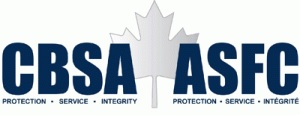
Following the Canada Border Services Agency’s (CBSA) proposal to change Canadian customs valuation rules to require the “last sale”, they have now extended the consultation period for an additional 30 days and are encouraging stakeholders to submit any comments concerning the regulatory proposal, including any perceived unintended consequences and any suggested amendments, using the online commenting feature on the proposal’s consultation page on or before July 26, 2023.
The CBSA published the proposed Regulations Amending the Valuation for Duty Regulations stating that they were intended to close the loophole on an “unfair advantage” that current regulations provided for non-resident importers (NRIs), which allow NRIs to declare a lower foreign sale price instead of a sale to a Canadian purchaser. As per the CBSA, these amendments would serve to level the playing field with Canadian resident importers. However, the concern is that the proposed amendments have a much broader impact than described. Essentially, unless goods are imported on speculation (i.e., without any previous agreements, purchase orders, or other types of arrangements for the sale of the goods prior to importation), the value for duty will be determined by the sale price on the last sale to a person in Canada. Why is this so concerning? That “last sale” would serve to significantly increase the declared value on which duty and taxes are paid at the time of importation into Canada, thus increasing prices to consumers.
Under the current Value for Duty Regulations, import duties are typically calculated on the transaction value of the goods (price paid to the foreign vendor). However, this proposed change to those regulations require that when an imported product is subject to multiple sales, the “sale for export” of that product is the “last sale”.
Following are just a few of the key visual representations produced in CBSA’s amendment:
Figure 2: Visual representation of the second importation scenario

Company E, which is located in Canada, purchases goods from company F, located in a foreign country. The goods are shipped to company E’s warehouse in Canada. Following the importation of the goods, company E sells the goods to company D in Canada, with no prior agreement. The goods are the subject of two sales: (1) from company F to company E, and (2) from company E to company D.
The only sale that is considered to have occurred prior to the importation of the goods into Canada is sale 1, from company F to company E. It is this sale that causes the goods to be exported to Canada. Therefore, sale 1 would be the sale for export to Canada that would be used to determine the transaction value of the imported goods.
Figure 7: Visual representation of the seventh importation scenario

Company Q, located in Canada, places an order with a company in a foreign country, company R, through its branch or dependent sales agent located in Canada. Company R contracts with another company in the foreign country, company S, to fill the order. The goods are the subject of two sales: (1) from company S to company R, and (2) from company R, through its branch or dependent agent, to company Q. The goods are shipped from company S to company Q through a third-party warehouse in Canada.
The intercompany transfer from company R to its Canadian branch cannot be a sale, as the branch is not a separate legal entity. Likewise, in the case of a dependent sales agent, although a separate legal entity, it does not purchase the goods. Both the sale between Company S and Company R, and the sale between Company R and Company Q are considered to have occurred prior to importation. The sale from company R, through its branch or dependent agent, to company Q is the sale that causes the goods to be exported to Canada and is the last sale in the supply of the goods to Canada. Therefore, it would be considered the sale for export to Canada and would be used to determine the transaction value of the imported goods.
Figure 8: Visual representation of the eighth importation scenario

Company U, located in Canada, is a wholly owned subsidiary of company V, which is located in a foreign country. Sales in Canada are solicited using sales agents.
In this case, the sales agent has obtained an order from company T, located in Canada, and the order is placed through company V’s computer system. Once the purchase order is accepted by company V, two invoices are automatically generated – one from company U to company T, and another from company V to company U. Company V then contracts with company W, also located in the foreign country, to fill the order. The goods are the subject of three sales: (1) from company W to company V, (2) from company V to company U (intercompany sale) and (3) from company U to company T. The goods are shipped from company W to company T, through company U.
All sales are considered to have occurred prior to importation. The order from company T, sets off the chain of events that cause the goods to be exported to Canada and provides for the last transfer of the goods in the supply of the goods to Canada. Therefore, it is sale 3, from company U to company T, on the authority of company V, that would be considered the sale for export to Canada and would be used to determine the transaction value of the imported goods.
We will continue to keep our clients apprised of key developments in this Consultation process, and would recommend that you utilize the online commenting feature on the proposal’s consultation page on or before July 26, 2023.
For more information, contact Brian Rowe, Director – Customs Compliance & Regulatory Affairs.
















